1942 year. German response to T-34 and KV
So, we stopped at the beginning of the 1943 year:
1. Soviet industry mastered the mass production of T-34 - it began to be produced at all 5 factories, where it was produced during the war years. This is, of course, not counting the Stalingrad Tank Plant, at which the release of the Thirty-Fours was discontinued in September 1942 and no longer resumed.
2. Design tank T-34 has been greatly improved and rid of many "childhood diseases". In general, the army was now getting a fully combat-ready tank with slightly increased motor resources.
3. The Red Army was able to form in large quantities and learned how to use tank corps, which can be viewed as a domestic counterpart (not a copy!) Of the German tank division. Approximately the first corps of the corresponding state appeared in our 4 quarter of 1942.
Thus, it should be said that towards the end of 1942, the beginning of 1943, the Red Army received its own Panzervae, capable of effectively waging a modern tank war, even against such a formidable enemy, as were the forces of fascist Germany. Nevertheless, of course, our tank forces still had room to grow. We will consider the shortcomings of our tank formations a bit later, but for now let us pay attention to what the “gloomy Aryan genius” answered to the growth of Soviet tank power.
As we have said many times before, the T-34’s huge advantage over German tanks was counter-booking, which the Thirty-Four was equally protected from all sides. At the same time, the German T-III and T-IV, even after enhancing their body armor, were anti-skid, and even then - with certain reservations only the frontal projection of the car could be considered.
Nevertheless, of course, the term “counter-missile” from all Soviet and German tanks was fully applicable to armor, except for the KV-1 — its 75 mm armor plates really “did not want” to break through the Wehrmacht’s first year of war. As for the 45 mm T-34 armor plates, they, despite rational inclination angles, were counter-spacing only against a limited number of artillery systems. In fact, the thirty-four armor defended well against short-barreled 50 and 75-mm cannons, as well as any smaller caliber artillery. But against the armor-piercing projectiles of long-barreled 50-mm artillery systems, the T-34 protection didn’t work so well, although it was very difficult for the Thirty-Four to deal decisive damage from this gun, and the Germans themselves considered it only limitedly effective. At the same time, the armor-piercing shells of guns with a caliber of 75 mm with a normal barrel length reserved T-34 protected quite arbitrarily. Thus, according to research institutes No. 48, made in 1942, only 31% of the total number of hits of 75-mm projectiles were safe for the tank - and there are no guarantees that any number of projectiles fired from short barrel guns. By the way, for 31-mm shells, the number of safe hits reached 50%.
So, the Germans, faced in 1941 with the T-34 and KV, of course, did not sit with folded arms and with 1942, they seriously began to saturate the Wehrmacht and SS units with adequate anti-tank weapons. What did it look like?
Towed guns
Before the start of the invasion of the USSR, the Wehrmacht’s main anti-tank weapon was the 37-mm “beater” Pak 35 / 36.
Let us pay a little attention to the designations of the German guns. The first figures of the Germans meant caliber, and in centimeters rather than millimeters, but the author chose to keep the definition familiar to the domestic reader. Then followed the name of the artillery class: Pak is “Panzerabwehrkanone” or “Panzerjägerkanone”, that is, an anti-tank cannon or gun hunter’s tank, as they were later called. And finally, the last figures are the year of construction of the prototype.
This gun had a lot of merit. It was very light, which simplified its transportation by cars and allowed the calculation to roll it in battle. The small size of the gun made it possible to mask it effectively, and the low weight of the projectiles and the successful design made it possible to develop a high rate of fire. But, for all its undoubted merits, the “beater” had two fundamentally unrecoverable drawbacks - a small armor ’action and the ability to confidently hit only tanks with anti-bullet armor.
Accordingly, the German armed forces needed a new artillery system, and it was the 50-mm Pak 38.
As you can see from the last figure, the prototype of this gun appeared in 1938, but the Germans were clearly not in a hurry to mass saturate the army with this gun: in 1939, the entire 2 instance was released, in 1940 g - 338 units mass production unfolded in 1941, when 2072 produced such weapons. I must say that the Pak 38 proved to be a very successful artillery system. It was still quite light and mobile, but at the same time its trunk extended to 60 caliber increased the initial velocity of the armor-piercing projectile to values that allowed it to more or less successfully fight against T-34 at medium distances.
So, in 1942, the production of Pak 38 reached its peak - 4 480 of such guns was launched. Nevertheless, despite the “long” barrel, the armor penetration parameters of this weapon were no longer considered satisfactory. So in 1943 g, after the production of another 2 826 units. their release was discontinued.
In fact, of course, the Wehrmacht needed an 75-mm anti-tank gun, and the Germans had this gun: the famous 75-mm PaK-40.
This 75-mm VET gun began to be created back in 1938, but the work on it was not considered a priority, and here's why. Many of our military lovers stories It has long been a good tone to admire this artillery system. As regards armor penetration, it is, without any doubt, worthy of these raptures. Suffice it to say that PaK-40 fired 6,8 kg armor-piercing shells with an initial speed of 792 m / s, while our famous 76,2-mm ZiS-3 - 6,5 kg with an initial speed of 655 m / s. At the same time, the German cannon was distinguished by its excellent shooting accuracy (however, the ZiS-3 also had an accurate accuracy). It must be said that until the very end of the war, the PaK-40 remained an extremely effective anti-tank weapon: it confidently hit any Soviet armored vehicle, with the exception, perhaps, of EC-2.
But then a natural question arises - if the Germans created such a perfect VET vehicle already in 1940, what prevented them from immediately putting their 75-mm miracle cannon on the stream? The answer is very simple - for all its merits PaK-40 categorically did not fit into the concept of blitzkrieg.
The fact is that with all its undeniable merits PaK-40 could only be transported on a mechtyag. Moreover, as far as the author could figure out, the car could only have been enough to drive on the highway, but when towing on dirt roads or off-road, the PaK-40 needed a specialized tractor. Mobility on the battlefield was also considered limited, it was assumed that if the calculation could roll the gun from one place to another, then no more than a dozen or so meters.
It is interesting, by the way, that the ZIS-3, having a comparable mass, could be transported by any type of vehicle, including relatively low-powered vehicles like GAZ-AA, and could “roll over” in battle for long distances, which made it possible to use them for direct support of advancing rifle units. However, a detailed comparison of ZiS-3 and PaK-40 is beyond the scope of this series of articles, so we will not continue it here.
Well, returning to the 75-mm PaK-40, we note that it was an excellent anti-tank tool, so it was difficult for the Germans to “drag” him into the tank breaks. We can say that this artillery system was no longer so much a means of attack as defense. Accordingly, it didn’t fit into the blitzkrieg strategy at all, and until the Wehrmacht collided with tanks with anti-missile armor, its power was considered excessive. Thus, for a long time the Wehrmacht did not feel the need for such an artillery system and did not rush the industry with its production.
But when it became clear that in the USSR the blitzkrieg somehow did not work out and even 50-mm artillery was only partially used in the fight against T-34 and KV, then in November 1941 was decided to urgently put PaK-40 into production . Since February 1942 has been able to adjust the serial production, and by the end of the year 2 114 such guns were produced, and in 1943 their production was already 8 740 units, and further increased.
I must say that another significant drawback of PaK-40 was the complexity of its production. Oddly enough, but PaK-40 was too complicated product, even for German industry. In February, the first 1942 guns of this type were produced by 15, but the planned production of guns per month in 150 was made only in August of the same year. But even this, a small, in general, number of guns suffered from a lack of ammunition - on average, the guns in the troops constantly had no more than one ammunition. The Germans even had to create a special team "Ulrich" and give them the broadest powers to solve the "shell" issue. However, acceptable supply of PaK-40 ammunition was achieved only in 1943.
In addition to all of the above, the Germans had one more 75-mm gun PaK-41.
It was a very original artillery system designed for firing sub-caliber projectiles. Its barrel had a “variable” caliber, - 75 mm at the gate and 55 mm at the muzzle, and was attached directly to the gun shield. Due to the high cost of weapons and excessive - ammunition for it (in the manufacture of the latter used the shortest tungsten) in a large series of weapons did not go. But still some amount (at least 150 units) was produced and sent to the troops.
At this point, the story of German towed anti-tank guns could have been completed ... if not for one important “but!”. The fact is that, sadly, not only German factories, but also the French and Soviet armies supplied the Wehrmacht with anti-tank weapons.
Already in 1941, during the Great Patriotic War, the Germans managed to capture a certain number of domestic 76,2-mm F-22 guns. The gun, in general, they liked, therefore, after certain modifications, which included the bore of a chamber for using a larger charge and some other innovations, entered service with the German army.
The exact number of guns converted and transferred to the Wehrmacht in towed variant is unknown, but according to some sources, 1942 guns were remade in 358, 1943 in 169 and 1944 in 33.
But the greatest contribution to the provision of the German armed forces with anti-tank 75-mm guns in the 1942 was still made by the French army. After the capitulation of France, the Germans, among other trophies, got several thousand 75-mm divisional guns arr. 1897, the company "Schneider". At first, the Germans didn’t do anything with them, but then, when the need for VET 75-mm guns became extremely high, they upgraded these tools by installing them on 50-mm Pak 38 gun carriages.
In 1942, the 2 854 of such guns was transferred to the Wehrmacht, in 1943 g - another 858 unit. Pak 97 / 38 and more 160 guns Pak 97 / 40 modification. Thus, in 1942, the French 75-mm guns became the most massive towed gun of this caliber in the Wehrmacht PTO. The share of French guns in the total number of 75-mm VET, received by the German Armed Forces in 1942, was more than 52%.
In fairness, it should be pointed out that the capabilities of the French "rework" were still not enough to oppose the T-34 and KV. The initial speed of the Pak 97 / 38 armor-piercing projectiles was not enough for this, and when meeting with tanks with anti-bullet armor it was mainly necessary to hope for cumulative ammunition.
On the other hand, the "French" in the Wehrmacht very well show the actual attitude of the German soldiers to our T-34 and KV. No matter what today's pseudo-historians say, savoring the shortcomings of the Thirty-Fours, but in 1942 the Germans found themselves in such an unpleasant situation that they had to urgently put in a series of 75-mm Pak 40 - and could not do it. So we had to plug holes with masses of French trophy artillery of the sample of the end of 19-th century!
Nevertheless, the Germans succeeded in the main thing - according to some data, the proportion of Pak 40 and 88-mm anti-aircraft guns in the total volume of Wehrmacht's TCP reached 30% by November 1942, and it is obvious that the lion’s share of the remaining towed guns of the PTO were French 75- mm Pak 97 / 38 and long-barreled 50-mm Pak 38.
Self-propelled artillery mounts
Let's start with the good old StuG III, which we call “Sturmgeshütüm”, “Stug”, and more often - “Art-storm”. The history of this self-propelled is as follows. According to the German military theory, the tanks were intended almost exclusively for special formations, which in the Wehrmacht became tank divisions, neither motorized nor infantry German divisions were relied upon by the state. Nevertheless, it was clear that in the modern battle infantry needs the support of armored vehicles - and this is the task that the Germans assigned to their "dumps."
If the most "popular" German pre-war tanks were armed with the bulk of the 37-mm guns and only gradually transferred to the 50 mm, the SPG initially received, though short-barreled, 75-mm guns.
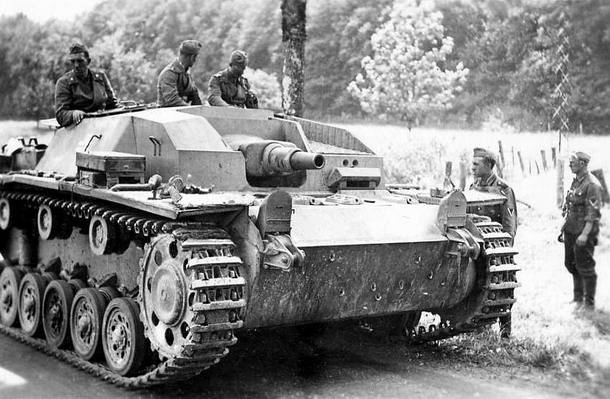
Their high-explosive fragmentation projectile had far greater power than that of tank guns, and the small length of the barrel, the low initial velocity, made it possible without problems to fit it into the self-propelled gun on the basis of the T-III. Nevertheless, of course, the 75-mm artillery system with a barrel length in 24 caliber was not enough to combat the T-34 and KV, here only cumulative projectiles could save the situation.
And the number of such collisions grew and grew, and it was obvious that the German infantry divisions themselves had nothing to oppose to the new Soviet tanks. About the efforts on the part of the towed artillery, we described above, but this was not enough. And since March 1942, the German “stuffs” are getting a new 75-mm artillery system, analogous to the Pak 40, which first had a barrel length 43 and then 48 caliber.
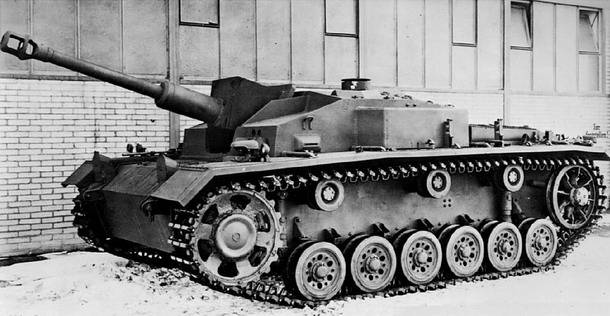
In total, in 1942, the “long-barreled stuff” was released over 600 units, in 1943 - 3 011 units.
Tank destroyers
At the beginning of World War II, German forces concentrated in the east had about 153 anti-tank SAU Panzerjäger I (Panzerreger I) armed with Czech 47 mm at their disposal.
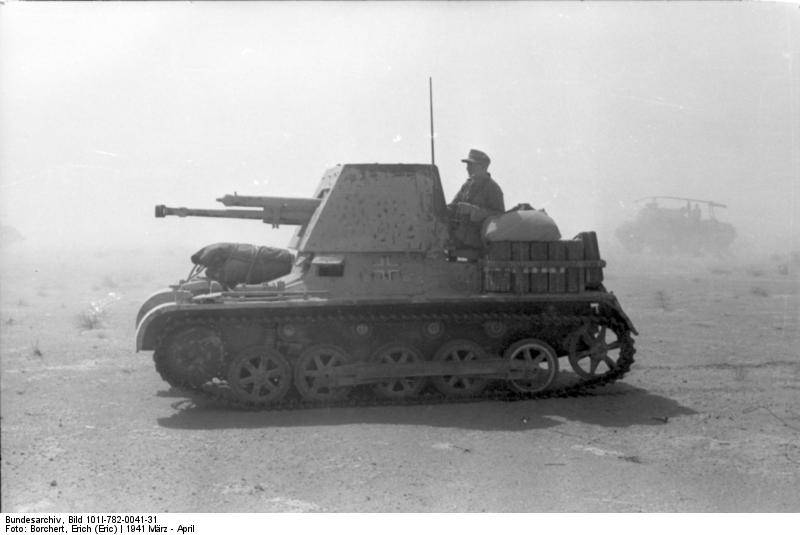
These were already outdated, in general, machines that could pose some threat to the T-34 and HF only when using sabot projectiles. During 1941, the Germans converted from the French tanks another 174 anti-tank SAU with the same gun, some of which fell on the Eastern Front.
But all this by and large was unimportantly armed with a trifle, unable to seriously affect the balance of power.
However, in 1942, the Germans returned to creating specialized anti-tank SAUs at a qualitatively new level: based on the T-II chassis, they installed either the 75-mm Pak 40 or the converted F-22 trophy on it. This ACS was named Marder II, and in 1942 g its release was 521 units. - Some of them were converted directly from previously produced T-II tanks.
In parallel, the Marder II Germans organized the production and Marder III, which differed from the Marder II only in that instead of the chassis from the T-II was taken the chassis from the Czech tank Pz Kpfw 38 (t). Such SAUs were released in 1942. 454 units.
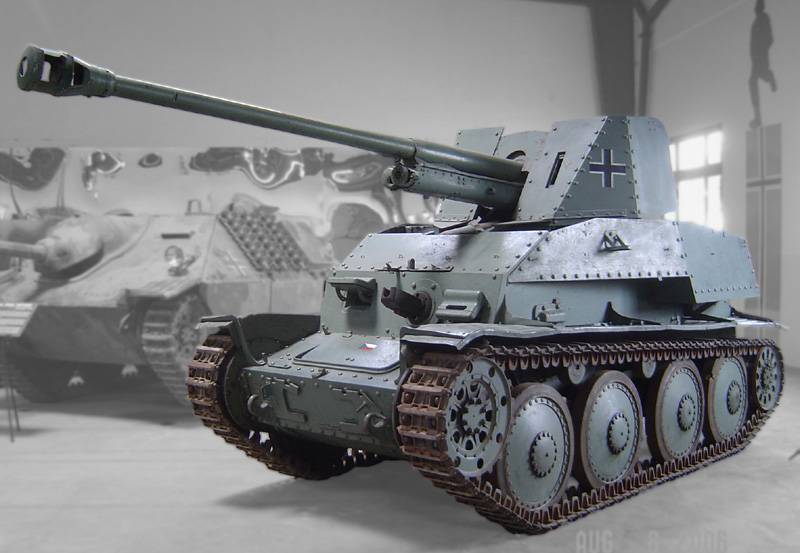
In order to organize training for the crews of anti-tank ACS, it was necessary to leave some of them in the rear, but this was recognized as excessive waste, and it was proposed to create a similar ACS, based on some trophy technique. In the end, the choice was on the French tracked tractor - this is how the Marder I appeared, of which 170 units were released.
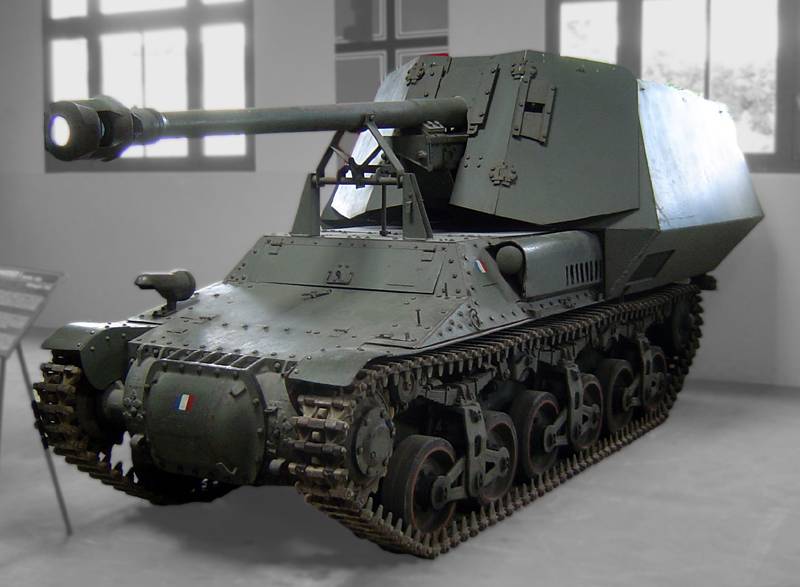
Interestingly, despite the "training" orientation of this type of machine were eventually sent to the Eastern Front. Thus, we see that the Germans created 1942 1 anti-tank SAU armed with either Pak 145 or captured F-40 in 22 - all of them, of course, were dangerous for T-34. Interestingly, Muller-Hillebrand gives a slightly larger number - 1 243 anti-tank SAU.
In 1943, the release of anti-tank self-propelled guns grew slightly: Marder II released and refitted approximately 330 units. Marder III - 1 003 units
Tanks
In 1942, the German armed forces finally abandoned mass production of light tanks. In 1941, the mass production of the T-II and the Czech Pz Kpfw 38 (t) was still going on, 846 machines were produced in total, which made up almost 28% of the total number of linear tanks (not counting commander tanks). In 1942, these types of light tanks produced only 450 vehicles, representing about 11% of the annual production of tanks in Germany. At the same time, production of Pz Kpfw 38 (t) was discontinued in May, and T-II - in July 1942.
As for medium tanks, their production continued to grow: T-III was released approximately 1,5 times, and T-IV - 2 times more than in 1941. On the one hand, it may seem that the Germans are in 1942. still focused on T-III, since they were produced by 2 605 units. against 994 units T-IV, but in fact this year has become a “swan song” “treshki”. The fact is that the Germans in 1942 resolved the issue of expanding the production of T-IV: if in January 59 machines were released, in December their production almost tripled and reached 155 machines. Thanks to this, 1943 managed to replace the production of T-III with heavier and more advanced machines - although in December 1942 production of T-III was 211 machines, but in January 1943 was only 46 machines, and in just the first 6 months 1943 r was produced only 215 tanks of this type, that is, even less than 36 machines per month. And then the "treshki" finally left the assembly line. And, of course, it is unnecessary to remind that in 1942 the Germans launched the production of a heavy tank “Tiger”, although they were not able to organize their production in commercial quantities - only 1942 “Tigers” were released before the end of 77.
Of course, besides quantitative, there were also qualitative changes. Starting with the 1940, the T-III received the 50-mm cannon with a caliber 42 barrel, whose ability to hit the T-34 was frankly small. But since December 1941 in the T-IIIJ1 version has received a more powerful 50-mm artillery system with 60 barrel-length calibers (similar to Pak 38), which already gave certain chances to hit T-34 not only at small, but also at medium distances.
Of course, the installation of this weapon increased the anti-tank potential of “treshka”, although, as we said above, the Pak 38 capabilities were still considered insufficient to combat the T-34.
What is interesting is that despite the threat posed by Soviet tanks, the Germans still had to return to the T-III for short-barreled 75-mm KwK 37 guns with barrel lengths of all 24 caliber, which were used to arm the early T-IV models and “stuff” . Moreover, this was done in July-October 1942, when 447 T-IIIN modification tanks were produced with KwK 37.
On the one hand, such a return to the almost useless guns in a tank battle seems completely unjustified. But on the other hand, we must remember that, according to the views of those years, tanks still should not have fought with tanks, and in any case, this was not their main task in battle. German tanks had to break through enemy defenses, enter a breakthrough, destroy enemy units on the march, help the motorized infantry to close the encirclement ring, repel counterattacks of troops trying to escape from the encirclement. In other words, goals such as light field fortifications, infantry, machine gun nests, field artillery, cars, and other unarmored vehicles were not just important and legitimate, but priority targets of German tanks. But in theory, the anti-tank guns, that is, towed and self-propelled anti-tank artillery, had to cope with enemy tanks. Tank duels should have been the exception to the rule.
However, the hostilities on the eastern front quickly showed that it was impossible to shift the task of fighting with Soviet tanks solely to the means of VET. Thus, the Wehrmacht needed a tank, whose weapon would be sufficiently powerful both to combat unarmored targets, and against enemy tanks. Ideally, at that time, an 75-mm artillery system like the Pak 40, which was powerful enough for its armor-piercing shells to hit enemy armored vehicles and high-explosive targets, was suitable for this purpose.
But Pak 40 categorically "did not want to" get into the T-III, although there were attempts to install it on the "three". As a result, the Germans had to go on a well-known dualism. The bulk of the T-III was equipped with 50-mm long-barreled guns, capable (albeit through time) to fight the T-34, but whose high-explosive shells had insufficient action to destroy other targets. Other "treshki" received a "short-barred" KwK 37, which were not suitable for the anti-tank fight, but much better "worked" for the rest of the objectives of the tank gun.
Another thing - T-IV. This combat vehicle was heavier and more spacious than the T-III, thanks to which the installation of 75-mm Pak 40 on it was quite possible. For the first time, the more powerful 75-mm KwK 40 L / 43 cannon (similar to the Pak 40 with a barrel shortened to 43) was applied to the T-IVF2 (or Pz Kpfw IV Ausf F2, if you like) modification, which was launched in March 1942.
Initially, the T-IV was armed with a short-barreled 75-mm cannon KwK 37 and up to February the 1942 g inclusive, the Quartet was produced only with such a gun. In March-April, modifications with the “short” KwK 37 and “long” KwK 40 L / 43 were made in parallel, and since May of the same year, German factories finally switched to the production of “long-barred” modifications T-IV. A total of 994 tanks of this type, released in 1942, 124 received KwK 37 and 870 units. - long-barreled KwK 40 L / 43.
We are not going to talk about Tiger tanks yet - in fact, this heavy tank initially had a pronounced "anti-tank" orientation, in that its capabilities were extremely high, and surpassed any tank in the world.
In general, we can say that in 1942, the anti-tank capabilities of the Wehrmacht and the SS underwent a qualitative change. By the end of 1942 - the beginning of 1943 due to the efforts of industrialists and the widest use of war trophies, the Germans were able to re-equip their towed and self-propelled PTO artillery and conventional self-propelled guns with tools capable of fighting T-34 and KV. The same was true for panzervaffe. At the beginning of 1942, the main tank guns were 50-mm KwK 38 L / 42 with a barrel length 42 caliber and 75-mm KwK 37 with a barrel length 24 caliber, the capabilities of which were notoriously small to deal with tanks with counter armor. However, by the end of 1942, the basis of the German armored forces was combat vehicles with a long-barreled 50-mm KwK 39 L / 60 cannon and an excellent 75-mm KwK 40 L / 43 artillery system.
Thus, we have to state a fact - by the time when the Soviet tank forces, both from experience and organizational structure, were very close to the German Panzervae, the Germans managed to deprive T-34 of one of the most important advantages. Starting at the end of 1942 - the beginning of 1943. The T-34 could no longer be considered a tank with anti-missile booking.
To be continued ...
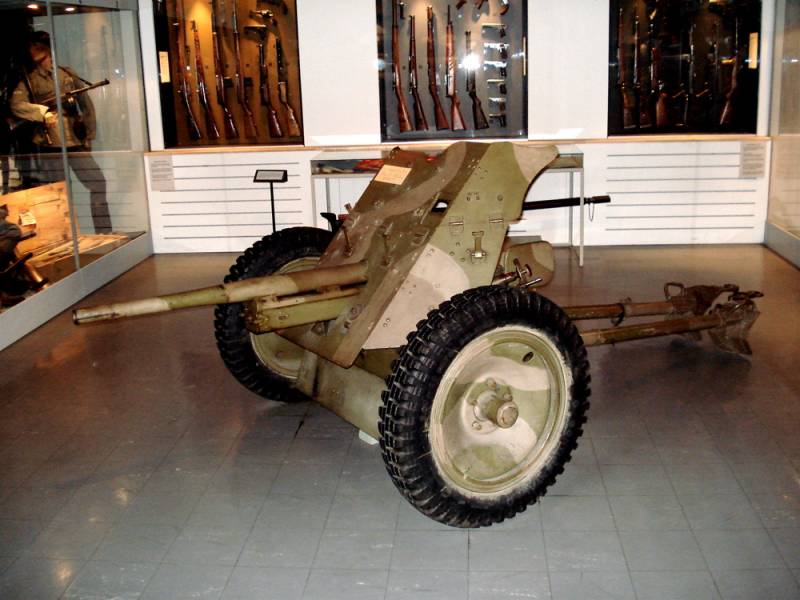
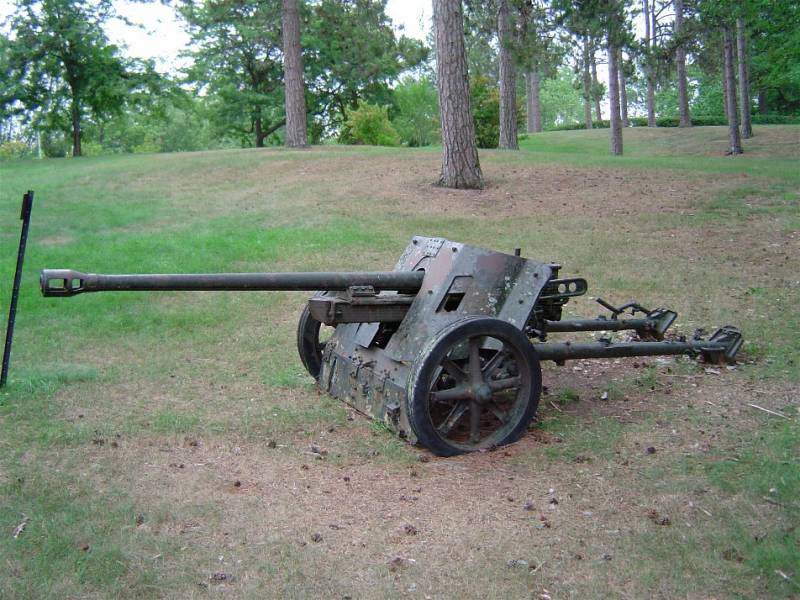
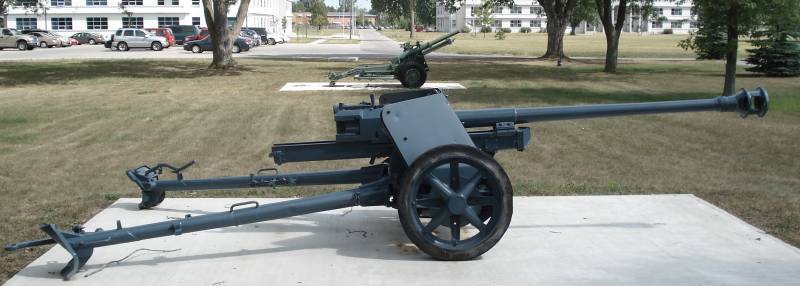
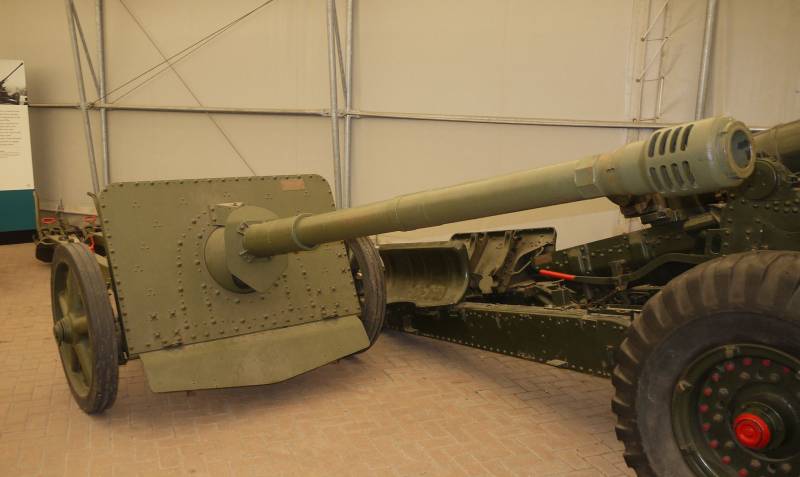
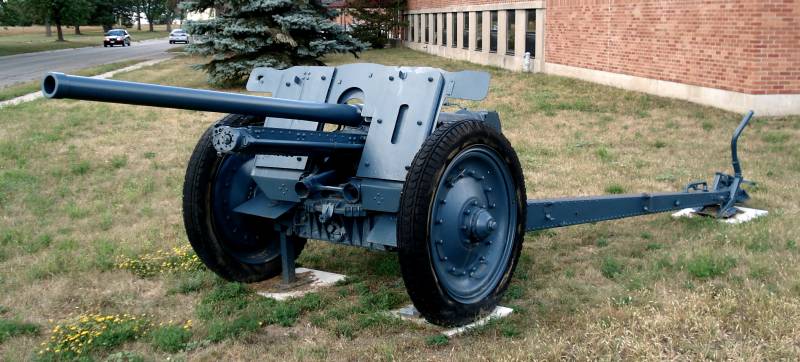
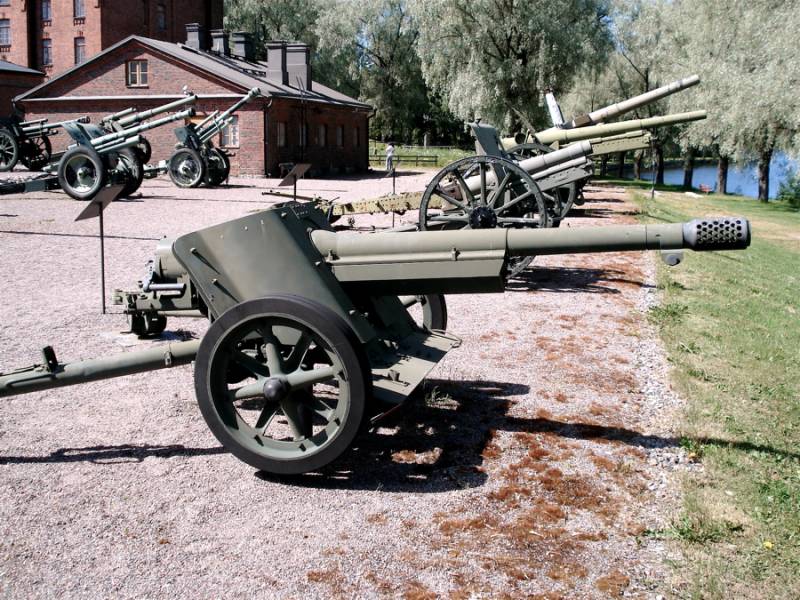
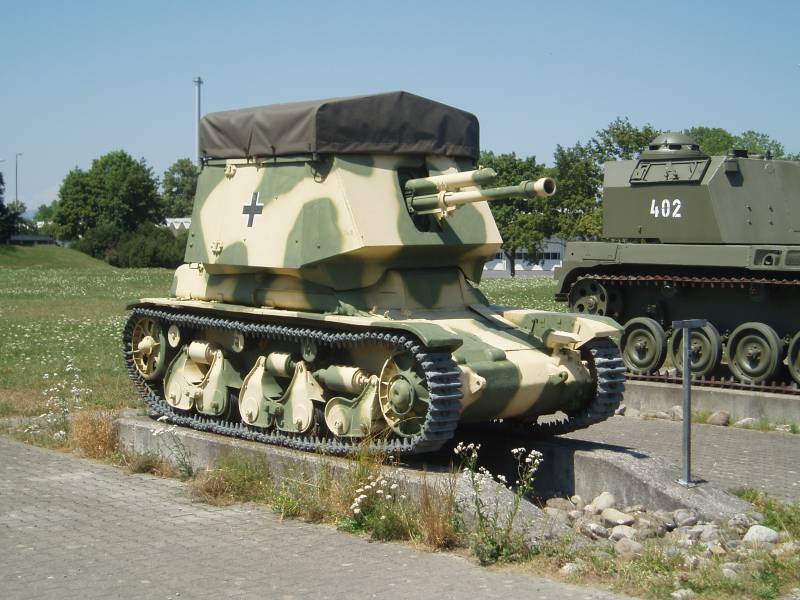
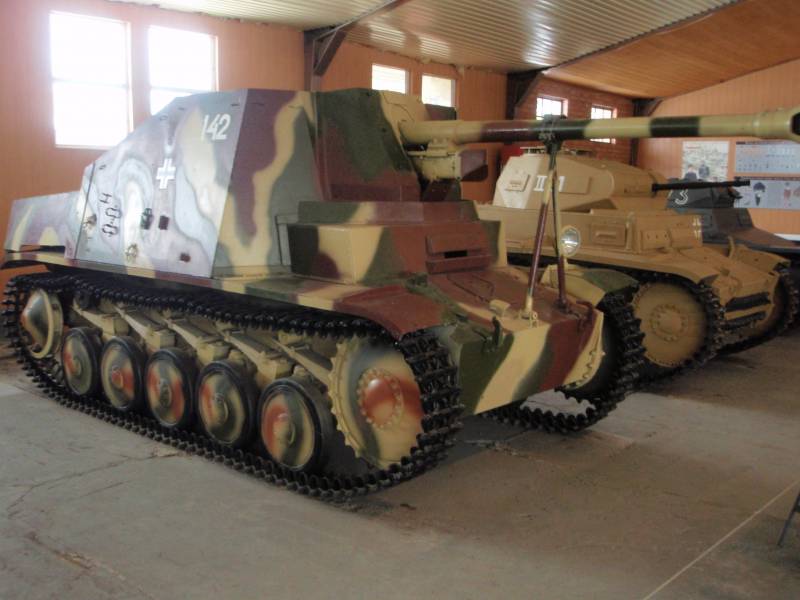
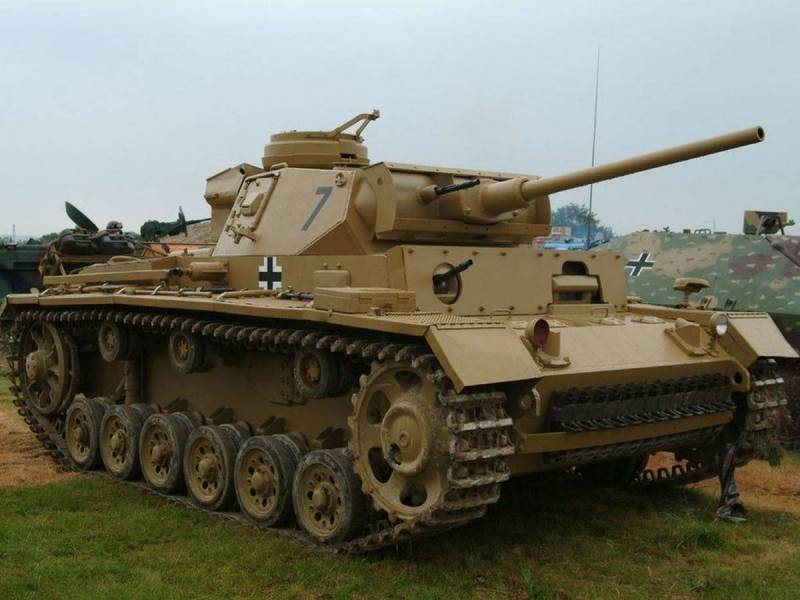
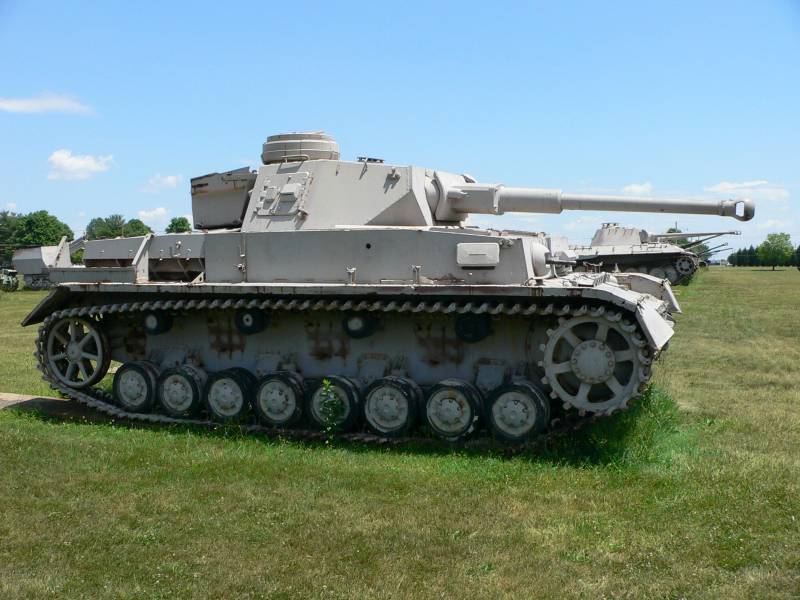
Information